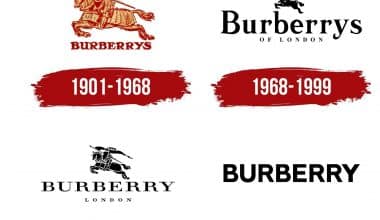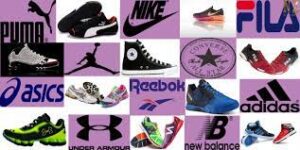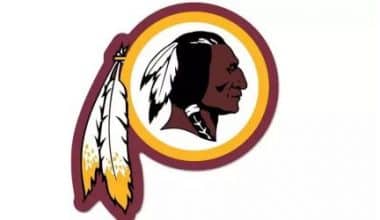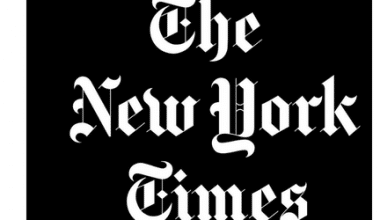The logo of Lions Clubs International is well-known all over the world as a sign of humanitarianism and selfless service. The company has a number of different logos, symbols, and icons that each stand for a specific program or service. Most of the time, the Detroit Lions logo has been a stylized lion. The Lion emblem first appeared in 1952, the year the team changed its name to its current moniker. Want to know more about the Lion logo? Below is the information you need to know about branding with a Lion logo.
Lions Logo
The Detroit Lions are a professional football team that competes in the National Football Conference North division. The franchise has competed in NFL games since 1930. In 1929, it was founded in Portsmouth, Ohio. The Portsmouth Spartans were the team’s original name. It formally joined the National Football League on July 12, 1930. Even though the Portsmouth Spartans were successful in the NFL, the Great Depression prevented them from surviving.
Poor income and other financial issues led to the franchise’s owners selling it to a group of investors led by Detroit radio station executive director George A. Richards. They paid the $15,000 NFL franchise fee as well as the team’s $795,208 debts. After purchasing the team in 1934, George A. Richards relocated it to Detroit, Michigan. At the end of its inaugural season, the team finished second in the Western division.
In 1940, Fred Mandel, a Chicago department store executive, paid $225,000 for the company. Edwin J. Anderson and Lyle Fife took control of the club eight years later, in 1958, and they held it until 1964. William Clay Ford Jr., a former Ford vice-chairman, bought control shares of the team’s stock for $4.5 million in November 1963, making him the sole owner of the Lions.
The team’s history is particularly intriguing because so few NFL players had name changes. They used to call themselves the Portsmouth Spartans as a nod to their hometown of Portsmouth. However, after moving the team to Detroit, George A. Richards changed the name of the team to honor the Tigers. The squad would rule the league like a lion governs the forest, according to the new owner. In 1935, the Lions delivered on their promise as they won their first NFL Championship.
The Lions Logo History
The Detroit Lions and many other NFL teams have the same name, mascot, and primary logo. It was originally known as the Portsmouth Spartans, but this wasn’t always the case. However, the relevant part of the club’s moniker was inscribed in a bold typeface with rectangular serifs on the club’s logo. The Detroit Lions changed their name to reflect the new title and obtained a number of lion-themed symbols. Thus, the first was cartoonishly colored, the second was white with a blue outline, and the remaining were all different colors of blue. A symbol with two distinct meanings, the lion appears in every Detroit Lions logo. It’s a salute to the Detroit Tigers baseball team first and foremost. Second, the NFL owners want the despot to have complete control over the league’s fields.
What is The Detroit Lions?
One of the well-known NFL legends that enjoyed early significant success is the Detroit Lions, a professional football team established in the United States in 1930. The Lions are the only team that hasn’t played in the Super Bowl, though.
Lions Logo History 1929 – 1933
The logo had two wordmarks because the Portsmouth Spartans were the team’s previous moniker. The word “PORTSMOUTH” was written in capital letters at the top of the logo, surrounded by a black border and beige typography. Below appeared the word “SPARTANS” in black with a golden-beige frame. Capital letters were employed once more, but this time they were slightly expanded to create a perfect rectangle.
Lions Logo History 1952 – 1960
Naturally, a lion and a football player carrying the ball were part of the original Lion logotype. They both show ambition, drive, and a desire to act right away. The beast roared as it popped up its mouth. It appeared to be getting ready to jump since its tummy was pressed against the ground. The football player was waiting for the signal to attack while also cocking his head forward. He was dressed in blue jeans, a red T-shirt, and a helmet. Both figures have black borders around them.
Lions Logo History 1961 – 1969
In 1961, the logo’s design and color palette received a significant simplification. A basic white lion with a faint blue outline and two thick (blue and grey) stripes in the background was useful in the new logo. The given logo’s color scheme underwent a significant alteration, moving to a white-blue spectrum. The lion’s stomach was still firmly planted on the earth. This stance demonstrated its focus and preparedness for a power outpouring. The wild animal was also depicted as being in a trim and fit condition to emphasize the participants’ excellent physical condition. The full-length, curled-in tail of a lion represents goal-oriented attention.
Lions Logo History 1970 – 2002
The iconic leaping lion, which first appeared in the team design in 1970, was a key component of this era’s logo, making it instantly recognized. The former logo was completely updated by the design team. The animal also was seen leaping with its forepaws in the air and its back paws on the ground. It made a dynamic impression with its posture. The lion had no eyes, no mouth, no nose, simply a crudely created muzzle for a face. The figure was surrounded by two blue and white outlines.
Lions Logo History 2003 – 2008
Despite being changed in 2003, this logo had very little change. However, the picture portrayed a ferocious, mane-covered jumping lion. As before, the beast’s mouth and nose were schematic and difficult to distinguish. The game’s ferocity, strength, and desire to harm people were mirrored in the lion’s pose. The creature resembled a lion rampant, which is generally shown on a heraldic crest standing upright with its forepaws raised. The sole difference was that a thick black outline took the place of the previous strong blue outline.
Lions Logo History 2009 – 2016
The jumping blue lion’s shape became more distinct in 2009. Now paws, a mane, a face, and a body could be seen. It was designed to appear considerably more realistic. In addition to having fangs, the lion appeared to be capable of using them as weapons to threaten adversaries. The parts of the eye, mane, and tail were also sketched. Initially white, then black, shapes combined to form a cruel shape.
Lions Logo History 2017 – Today
The designers ultimately succeeded in producing the logo they had envisioned after multiple failed attempts. The present version has undergone significant development since it was adopted in 2017. It has undergone numerous changes since 1970. The artists played around with the stroke color, lion shape, and inner path placement. The final product was subsequently presented, totally meeting the expectations of the club’s leaders. Compared to the previous logo, the Detroit Lions logo is sharper. There are distinguishable strands in the animal’s eye and flowing mane. The forelegs remained huge, but the back legs are larger. It’s the ideal analogy for the swift, fierce, and powerful king of the jungle. The dark black edge has turned pale grey.
The Lions have won four NFL championships, but the most recent was in 1957. In exchange for Earl Morrall, another player, and two future draft picks, Bobby Lane was released by Lyons in 1958. A legend has it that the former player predicted that without him, the Lions wouldn’t win another championship for 50 years. As a result of the Lions’ real failure to win a title in any of their games, this time period is often referred to as “The Curse of Bobby Lane.” For the first time since this type of schedule was implemented in 2008, a team losing every game during the regular season set a new record for the league.
The Symbol of a Leaping Lion
In the logo for the first time in 1970, the recognizable leaping lion can be seen. It was surrounded by two black-and-white outlines. The symbol has seen three changes since then (in 2003, 2009, and 2017). The most recent edition contains more details than the one from 1970. A grey outline has taken the place of the original black one.
Lions Logo Font
The club utilizes both the Lion emblem and a wordmark. The wordmark for 2017 includes a distinctive typeface in place of the Wayne font used in the 2016 version. Due to the unusually pointed components at the ends of the letters, it has a striking appearance.
Lions Logo Color
Honolulu blue, silver, and white are the team’s official colors, which were inspired by the hue of the waves off the coast of Hawaii. The body of the lion seen in the emblem conceals all of these colors. The overall color scheme was kept in honor of the team’s former squads, who significantly contributed to its history and title wins. Notably, the emblem had a big impact on the team’s apparel, and the color pattern made it onto helmets and other sporting goods.
White, silver, and Honolulu blue are the official team colors. Each of them is represented in the Detroit Lions’ current logo.
The Detroit Lions’ colors:
- HONOLULU BLUE
- HEX COLOR: #0076B6;
- RGB: (0, 118, 182)
- CMYK: (100, 45, 0, 10)
- PANTONE: PMS 7462 C
- SILVER
- PANTONE: PMS 8180 C
- HEX COLOR: #B0B7BC;
- RGB: (176, 183, 188)
- CMYK: (3, 0, 0, 32)
There’s a Good Reason Why the Beloved Lions’ Logo is So Identifiable and Unforgettable.
Because there are so many lions in the world, they proudly employ the symbol on nearly everything, says one explanation. The lion’s image evokes long-standing associations with strength, bravery, action, and fidelity. The original Lions insignia was proudly and playfully produced by the Lions when the Lions Clubs International was founded in 1917.
Their logo’s lion was patterned after a 19th-century Rosa Bonheur picture of a regal lion reclining in the wild. The artwork’s title, Old Monarch, was adopted by the group’s founding clubs and members as its moniker.
The first logo also contained a pun that demonstrated their sense of humor. The word “international” was written on the logo’s lion’s club. Lions International asked its members to adopt a more beautiful logo in 1919.
The Lions decided to form a committee in order to create an appropriate, professional emblem during the 1919 International Convention in Chicago after receiving a flood of submissions from club members who were also amateur painters. Chicago-based commercial artist and founding member Maurice Blink addressed the committee. Blink sketched a circle with two lions facing the opposite way and an “L” in the center.
The Lion’s board of directors approved Blink’s proposal in April 1920. Melvin Jones explained its meaning. Jones says that the design shows a lion “looking in all directions to serve, proudly facing the past and looking forward with confidence.” Early full-color representations of Blink’s design featured twin lions with dazzling fangs, brilliant eyes, and manes that swayed like those of actual lions. The lions’ ferocity subsided as the emblem gained widespread acceptance and standardization. At the start of the twenty-first century, the emblem was changed and brought back to life again. It is thought that it will be used for a long time. So why not? It works.
Which Brand Logo is Leopard?
On this fundamental T-shirt base, the leopard appliqué spans the now-famous Gucci vintage emblem. cotton jersey with a white wash.
What Brand Has A Tiger Logo?
The Kenzo logo is what? Although some belief the poppy to be a symbol of the company, the tiger emblem is the company’s most recognizable logo.
What Designer Uses A Lion Logo?
An eye-catching statement ring with an aged palladium finish and a lion—one of the wild animals in Gucci’s menagerie—snarls on it.
What Does A Lion Logo Mean?
In heraldry, the lion is a frequent charge. Because historically the lion has been regarded as the “lord of creatures,” it traditionally represents courage, nobility, monarchy, strength, stateliness, and valor. The lion is also symbolic of Judaism and Christianity.
Is The Lion A Symbol of God?
The lion served as a representation of Mithra, the sun deity, from Persia to Rome. At Troy, an Etruscan lion with wings guards the entrance to Temple Mountain. In Islam, Muhammad’s son-in-law and cousin was referred to as the Lion of God, and one of the four beings that supports Allah’s throne had a lion’s head.
What Brand Has a Lion Logo?
MGM Grand, ING Group, Royal Bank of Canada, and Löwenbräu beer all have lions in their logos.
What Brand Has A Lion And Crown?
By fusing the British royal seal—the crown logo—and the symbol of a financial supporter, the lion head, Cesar Ritz established the brand. The iconic lion and crown were first altered by Ritz-Carlton in 2015 in an effort to “clarify, simplify, and enhance” the corporate identity.
Which Luxury Brand Has a Lion Logo?
Making a logo might be difficult because it continuously reflects your brand. Even while it may be obvious to you that a lion belongs there, there are a ton of design trends, typefaces, and color schemes to consider. When choosing the artistic direction you want to go with your logo design, you can find creative inspiration by studying how well-known brands and corporations produced their lion logos.
#1. ING Group
By choosing an orange lion as its emblem, the global bank ING pays homage to its Dutch origins. Orange and the lion are both emblems of the Netherlands. Due to the fact that many of the early businesses used lions in their logos, the emblem also alludes to the bank’s past. The lion has remained an essential component of the ING brand after numerous mergers. Although the lion is orange and ING is displayed in a blue-violet hue, Times New Roman is used throughout the design in all capital letters.
#2. Premier League
Over the years, the Premier League’s logo has seen a number of alterations. The football was part of the earlier designs, but it’s not in this one. The lion has also changed; it is now primarily a 3D figure rather than a 2D one. The new look was implemented after Barclays’ sponsorship of the league ended in 2016. The dark purple used for both the lion and the word “Premier League” is the same hue. It is written in a sans-serif font with rounded corners.
#3. MGM Studios (Metro Goldwyn Mayer)
The MGM lion, whose roaring lion visage we all recognize as Leo, is a well-known cultural symbol. The lion has assumed a prominent role in nine different logo redesigns. What’s amazing is that a major portion of the logo that we now remember was created in the early 1980s.
Leo the Lion has been a well-known icon for nearly a century, but MGM updated its logo to make this metallic gold version and substituted a CGI lion for Leo. “Ars Gratia Artis” is Latin for “art for art’s sake.”
#4. Lonsdale
In order to create clothing for boxing and martial arts, Bernard Hart established the British company, Lonsdale, in 1960. Lord Lonsdale, who arranged the first boxing bout to be played in gloves, is honored by the company’s name.
The lion is a great symbol for Lonsdale because it stands for both power and bravery. Following the wandering lion is the wordmark, which is referred to as “a distinctive text-only typographic treatment of a firm name for branding.” An unusual typeface is used to write the wordmark Lonsdale, with the L serving as an arch for the other letters.
#5. Peugeot
The earliest existing automotive insignia is the Peugeot logo, which dates back to 1847. The lion logo has undergone numerous redesigns over time, growing stronger and larger. For a while, the lion standing on its hind legs in the “rampant” position was preferred. After 50 years, Peugeot eventually made the decision to give up the lion’s body in favor of a simpler emblem.
The brand’s new logo, which has a left-profile black lion crest, emphasizes both the brand’s expanding model variety and fresh attitude. The wordmark is written in a square sans-serif font with capital letters.
#6. Ritz-Carlton
The Ritz-Carlton emblem also has traditionally included a lion as a symbol of luxurious hospitality. By fusing the lion head, a representation of a financial patron, and the British royal seal—the crown logo—Cesar Ritz established the trademark. The recognizable lion and crown were first modified by Ritz-Carlton in 2015 in an effort to “clarify, simplify, and improve” the brand’s identity. Thus, the lion’s head, crown, and color blue were altered by the firm to maintain its significance. The logo is written in the Goudy Oldstyle typeface.
#7. Lowenbrau
The oldest brewery in the world goes by the name Löwenbräu, which means “lion’s brew.” The logo’s earliest known manifestations are from the seventeenth century. A 17th-century mural of Daniel in Lion’s den may be found in the original brewery, Löwengrube (Lion’s Den). The logo is a standing lion with a double-twisted tail and a tongue that sticks out. When a lion is in a “rampant” position, its front legs are stretched out and its claws are ready to strike. Gold and two shades of royal blue are both present in the color scheme.
#8. Royal Bank of Canada
The Royal Bank of Canada’s (RBC) logo has undergone various alterations over its 155-year existence, but the lion has never changed. Early iterations of the design had a somewhat ornate, colorless lion.
The current logo was created in 2001 as the Royal Bank underwent a transformation to become a provider of financial services. The new brand name, RBC, was used for the logo in order to highlight the business’s adaptability. By retaining the golden lion and globe, the logo pays homage to history and recognizes the brand’s Canadian roots. The brand’s upbeat attitude toward the future is communicated through the use of dark blue and yellow tones and a straightforward style.
#9. Chelsea Football Club
Intriguing circumstances surround the lion mascot of Chelsea Football Club (FC). The renowned “Chelsea pensioner,” the team’s first emblem, was useful for nearly 50 years. During the 1952–53 season, Ted Drake, the club’s manager, added the writing for the organization and a coat of arms to the emblem, but the change was only temporary. The Counts of Cadogan, the club’s previous proprietors, served as an inspiration for the lion rampant, which made its debut in 1953. The lion rampant began to roar as soon as Ken Bates took charge. In response to fan pleas, the new owner ultimately changed the emblem back to a lion rampant in 2005.
The logo’s five components are the “base,” the blue circle, the Chelsea emblem, the blue lion, the walking stick, the symbol of Abbot of Westminster, the rose and the football, symbols of England and the English game, and the sign that reads “The Chelsea Football Club,” according to the official Chelsea website. The use of lions in the logos of the FA, KNVB, and Aston Villa is proof that lions frequently appear in the designs of football teams and organizations.
#10. Pringle of Scotland
The Pringle lion is the instantly recognizable animal logo of the British knitwear company Pringle of Scotland. The lion symbol first appeared on clothing labels in 1934. Although it has been reinterpreted for more current pieces, it can still be seen on important items in the men’s and women’s collections.
The lion rampant was a popular motif in European and British royal heraldry, historically used to signify bravery, nobility, daring, and strength. The corporation continues to retain its legacy by using the heraldic lion.
What Country’s Symbol is A Lion?
Scotland’s flag features a lion with a yellow body and a red background. Three lions are England’s national symbol. These symbols have nothing to do with “Britishness” or “British qualities,” as they were widely in use before the concept of “Britishness” was duly in creation. Other medieval nations also used similar symbols.
Why is The British Symbol A Lion?
The lion was the animal most strongly connected with what is known as “Britishness”—strength, courage, dignity, pride, etc. They likely thought that none of the local animals had the necessary qualities.
What Purse Brand has A Lion?
Over the years, the Lion Head has also appeared in numerous Gucci collections as ready-to-wear prints, decorative items for the house, or silver fashion jewelry. The Lion Head is a representation of majesty, power, courage, strength, and wisdom.
What Brand Has a Tiger Logo?
Gucci, Burberry, Balenciaga, and Prada have all produced in-demand clothing and accessories pouring with brilliant reds and tiger stripes as their new creative inspiration and mascot, respectively.
What Does The Dutch Lion Represent?
On Philip the Handsome’s tomb, the lion—the symbol of the Burgundian Netherlands—first appears as a crest. Charles V subsequently added the sword. Arrows have been useful to symbolize the Seventeen Provinces of the Low Countries under Charles V’s rule since the early 16th century on coins and other items.
What Bank Has A Lion Logo?
A number of companies came together to form the global banking and financial services corporation ING, which has its corporate headquarters in Amsterdam. Given that lions are the national animal of the Netherlands, it is not surprising that the lion that you can see in the present ING design was also useful in the emblems of those businesses. You can see another homage to ING’s Dutch roots in the orange color of the lion. The color orange serves as the Netherlands’ flag.
Background And Significance
The Rijkspostspaarbank, one of the entities that later merged to form ING, used the Dutch coat of arms as its badge. Along with the two lions, there was a tagline that said, “I shall maintain.” The use of the country’s coat of arms was totally proper seeing that the government heads the business. In order to form ING, the Nederlandsche Middenstandsbank merged with other companies. It also used the Dutch coat of arms as a symbol on stationery and official documents.
When Rijkspostspaarbank and the Postcheque- & Girodienst amalgamated to form Postgiro/Rijkspostbankspaarbank, the logo underwent a number of alterations. There was a replacement of the roaring lion with a more subdued, lying lion. It was slightly heavier and had a longer tail.
The Origins of ING Symbols
The two insurance companies that later merged to establish ING, De Nederlanden van 1845 and the Nationale Levensverzekering-Bank, both had lion-based logos. The former used the country’s coat of arms as its emblem, while the latter’s logo featured a depiction of a virgin cradling a lion and was intended to represent that the company does everything possible to preserve its clients’ savings accounts.
ING Emblem
In the spring of 2013, ING announced that its US division would change its name. There will be a replacement of the recognizable lion emblem with a new logo and given the new name Voya. This sounded very plausible given that Capital One had just acquired the ING Direct USA bank. The Voya logo, however, still features the application of the orange tint to the original lion design.
ING Font
The writing of the current ING symbol is in Times New Roman typeface. The font only uses capital letters. The ING Postbank Group uses a distinctive sans-serif font.
ING Color
The company’s orange logo honors both its Dutch ancestry and the fact that it initially emerged under the reign of the House of Orange-Nassau (a branch of the European House of Nassau playing a leading role in the Netherlands). The blue-violet color used to create the ING logo is remarkable.
What Company Has An Orange Lion Logo?
An orange lion appears on the logo of the Dutch international banking company NG. it is This brand has a strong sense of identity thanks to the phrase “orange lion” in its logo. A great brand identity goes hand in hand with a powerful, recognizable logo. Therefore, if you want to develop a brand that people will think of when they hear just a few terms, start by learning how to create a logo.
Related Article
- QUEEN LOGO: The Real Meaning, History, and Why There Is a Bird in Queen Logo
- DISNEY JUNIOR LOGO: What is the Logo History & All You Need to Know
- Dutch Auction: Complete Guide to The Dutch Auction Sales Process
- 4 bad habits of entrepreneurs that killed Nokia and Blackberry and what you should learn from it.






